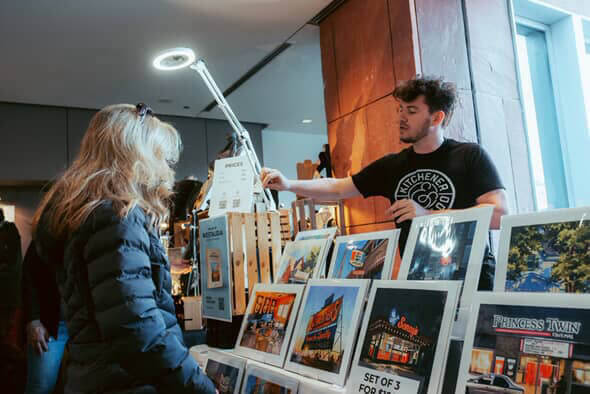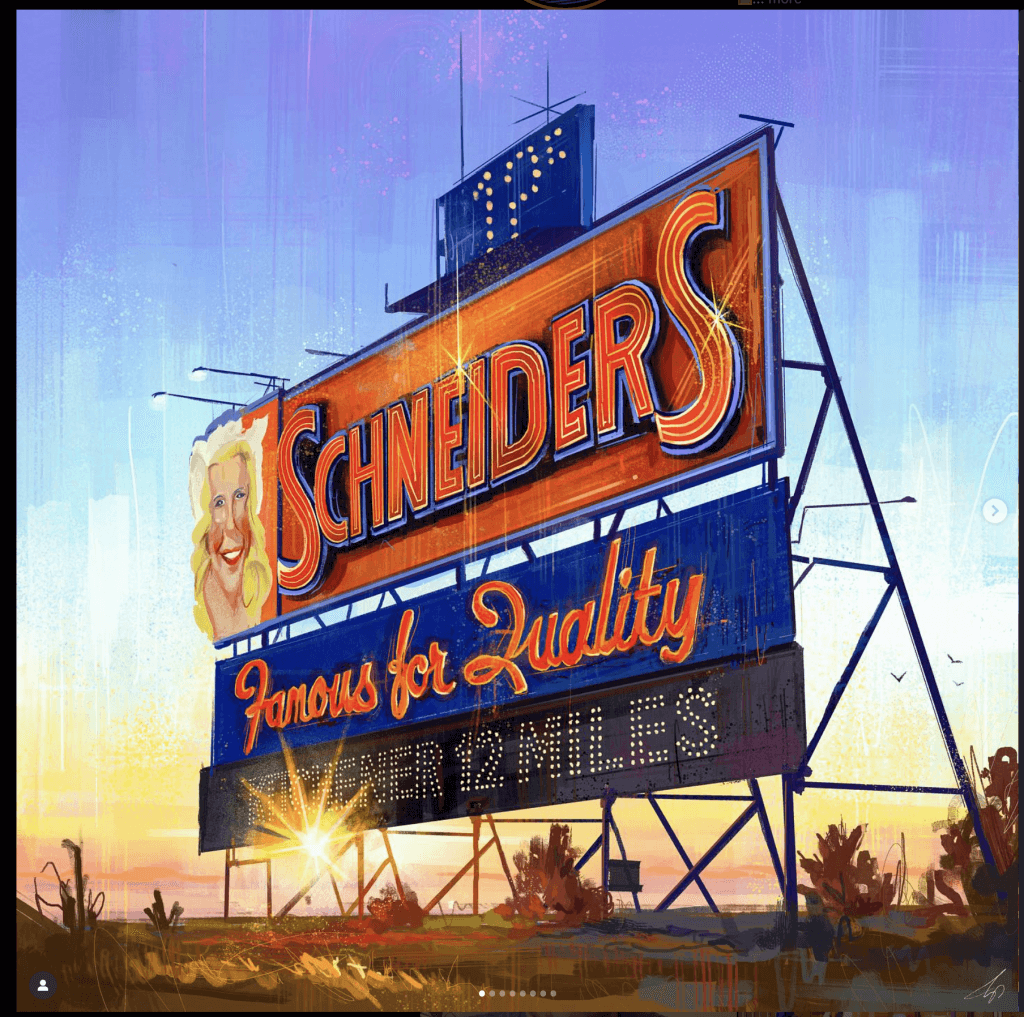If you asked Trevor Clare six years ago if he could see himself painting nostalgic locations for a living, he probably would have said that’s a “wild” idea.
Back then, Clare didn’t see art as a serious hobby, let alone a full-time career. If anything, he saw painting as a way to distract himself from his mental battles.
But what Clare didn’t realize was that his digital recreations of iconic neon signs, beloved mom-and-pop shops, and other nostalgic landmarks in Kitchener and Waterloo would do more than just help him deal with his mental health struggles. It drew in a community who appreciated how his expertise on colour theory, values, and balance turned digital art into something that brought back warm, fuzzy memories they so cherished.
Clare transformed what originally was just a personal distraction into something emotionally powerful and impactful for everyone around him.
Clare is a multimedia artist from Kitchener. He painted most of his life using traditional media focusing on landscapes and architecture. He also dabbled in graphic design for about 15 years. The Kitchener artist only started digitally painting nostalgic locations near his house on Guelph Street, just off Lancaster Street to keep his mind busy six years ago, when he was left unemployed and mentally struggling.
He wanted to get away from the “endless ruminations and unhealthy coping patterns.”
“I’m a very nostalgic person by heart,” he said. “I started capturing these [nostalgic] places because I felt like they really kind of spoke to me somehow.”
“I realized just how powerful that emotion was.”
This love for emotion and nostalgia is what made Clare gravitate towards painting places that were familiar to him, especially ones that had sentimental value. It’s this same ability – encapsulating emotion in art – that drew people to his work.

“Paintings must give a sense of comfort for many people, perhaps tinged with sadness for times and memories of the past,” Joan Coutu said of Clare’s artwork.
Coutu is a fine arts professor at the University of Waterloo. She teaches visual culture and art history courses. She classifies Clare’s art as “iconic local heritage paintings influenced by American Realism.”
The style is not new. There’s a long tradition to what Clare is doing. Coutu said that painting nostalgic scenes, especially rural ones, was “extremely popular in Europe and North America in the 19th century.”
American painter and illustrator Edward Hopper is a good example of an artist who focuses on the emotions and anxieties of everyday life in his art. According to the National Gallery of Art, Hopper had a “recognizable style in which ordinary places [such as] motels, gas stations, restaurants, while realistically rendered, are pervaded with a sense of estrangement or loneliness.”
Hopper is one of Clare’s inspirations for his work.
“I think that was important to [Hopper]… the nostalgia and the emotional part of architecture and place,” he said.
It’s what Clare captures in his creations. His painting of the Schneiders sign on Highway 401, he says, is an example of how art can remind people about memories and emotions they might have forgotten.

“It’s kind of like a landmark where we’re like, okay, we know we’re 20 minutes from home, welcome back,” he said. “The warmth of the neon… [it] really is an emotional thing for people.”
Clare transitioned to painting as a full-time job last November 2024. He sees the lucrative potential in his art. At the same time, he knows he’s running a business out of a passion; balance is paramount.
He doesn’t always paint a location just because people want him to do it.
“Would I be able to convey it in a way that would be powerful in an artistic capacity, not just the story itself?”
It’s a question he often asks himself – or rather one of many. There are many things about business that Clare doesn’t understand, especially as someone who doesn’t have an “entrepreneurial spirit.”
But again, he’s a dreamer.
“I would love to do a Canadian version of this where it’s cities across Canada or potentially worldwide,” he said with enthusiasm.
Through it all, Clare wants to make sure he doesn’t lose sight of his original goal. That is, to paint these places that are so near and dear to people’s hearts with sincerity, and not with money in his mind.
“At the end of the day, it is about community and connecting with everybody,” he said.
“That is still most important to me.”

